IN THE WILLIAMSBURG section of Brooklyn, a copywriter punches numbers into a phone. Within an hour, a fresh supply of pot is delivered right to his doorstep—as quickly and efficiently as if he’d ordered a pizza.
In Nogales, Arizona, U.S. Border Patrol agents open fire on a group of people standing on the Mexican side of the fence because they are reportedly throwing rocks. Instead of backing out of range, the agents classify the rocks as lethal force and fire into the group. Jose Antonio Elena Rodriguez, age 16, is shot and killed. The agents will claim that he was attempting to smuggle marijuana. When the Mexican authorities examine him they will find seven bullets in his body.
Somewhere in the vast acres of state parkland near Malibu, California, Drug Enforcement agents raid a grow-site, seizing 15,000 marijuana plants hidden beneath a canopy of native chaparral.
In Ciudad Juarez, Mexico, just across the Rio Grande from El Paso, Texas, six freshly-severed heads sit atop pikes on a highway overpass.
A 23-year-old woman falls ill after drinking some tainted water from a cattle trough somewhere in the Arizona desert. It is 110 degrees and she’s having trouble keeping up with her group. Her friend wants to stop so the woman can recover, but the “coyote” insists that the group keep moving. Leaving the woman in the shade of an acacia tree and promising to send help, the group quickly disappears into the rugged mountains of the Tohono O’odham reservation.
Farmers in Alabama, the state whose new, ultra-restrictive and prohibitively punitive immigration policy essentially ceased the flow of undocumented workers, find that this year, labor is not sufficient to meet demand.
In Washington, politicians bicker about the federal deficit. At no time during their discussions does the legalization of marijuana—which would both increase federal revenue by taxing the industry and decrease spending by cutting costs for enforcement, legal fees, and incarceration—come up. What these politicians may not realize is that before the Sixteenth Amendment legalized the right to collect income tax, in 1913, the federal government of the United States was funded in the main by excise taxes on alcohol. If the taxes on alcohol were enough to underwrite the entire apparatus 100 years ago, how much revenue would similar taxes on marijuana bring in today?
In Juarez, photographs of the severed heads make the newspapers, but generally the story is ignored. Residents of this city, rife with underworld activity, are used to far more gruesome displays of cartel violence.
The DEA near Malibu finds that the lands surrounding the pot plants are devoid of life—all other plants and animals have been killed by a virulent poison of such high toxicity that it is illegal in the United States.
On the legalization of marijuana in Washington State and Colorado, Attorney General Eric Holder writes: “As a general matter, pursuit of these priorities should not focus federal resources in your States on individuals whose actions are in clear and unambiguous compliance with existing state laws providing for the medical use of marijuana. For example, prosecution of individuals with cancer or other serious illnesses who use marijuana as part of a recommended treatment regimen consistent with applicable state law, or those caregivers in clear and unambiguous compliance with existing state law who provide such individuals with marijuana, is unlikely to be an efficient use of limited federal resources. On the other hand, prosecution of commercial enterprises that unlawfully market and sell marijuana for profit continues to be an enforcement priority of the Department.” Holder’s reign as AG has been especially baneful to marijuana smokers.
Free from the scourge of undocumented workers, Alabama suffers a labor shortage. Crops rot on the vine. The state economy takes a hit.
The young woman who was left behind in the desert finishes the last of her water. The temperature is now 118. Her headache is getting worse, and she’s having trouble with her eyes. She was on her way to California where a cousin had arranged a job for her to pick avocados. After NAFTA, her father lost his farm and had no way to feed their large family. As the oldest of seven children, she was forced to head out in search of a way to earn a living. She did not want to come north, she’s never been out of her village, but there were no jobs for her in Mexico. She closes her eyes. She will be dead by morning.
The Border Patrol agents are ruled to have used “justifiable force” in shooting 16-year-old Jose Antonio Elena Rodriguez for throwing rocks. There will be no penalty for shooting across the border and killing a Mexican national on Mexican soil. At least 16 civilians have been killed by U.S. Border Patrol agents, on both sides of the border, in the last two years.
In Brooklyn, the actor receives his delivery of pot. He tokes up, happy, and unaware that the buds he’s smoking are laced with faint traces of the virulent poison the DEA agents found in Malibu.
~
These people are all related, just as the issues they deal with are all related. Marijuana, drug enforcement, the cartels. Immigration, border patrol, human trafficking. Undocumented labor, worker protection, women’s rights. How the U.S. government chooses to manage, or not manage, any one of these issues has a ripple effect on all the others. All are connected, and all flow inevitably from the relationship between the United States of America and the United States of Mexico. To research pot is to research immigration; to study human trafficking is to study worker’s rights; to investigate any of these issues is to open la caja de Pandora.
To help me understand how the pieces fit together, I reached out to Katie Arnoldi. While researching her novel Point Dume, she became an expert in what I’ll call, for lack of a better blanket term, the Mexican Connection. I’d heard her talk compellingly about her experiences on the Other People with Brad Listi podcast awhile back, and I invited her to write about it for The Weeklings. Because the subject is so vast, we decided that the best way to cover it was to have an extended conversation. This five-part series is the result of that conversation.
I. Cannabis Wrecks
[Greg Olear]: You’re a fourth-generation Californian, born and raised in Malibu, back when it was still a sleepy beach town. You’re a very good surfer; you not only know what “hang ten” means; you’ve actually done it. You’ve traveled all over creation, and not from Ritz-Carlton to Ritz-Carlton; you’ve made good use of your backcountry survival training. You were a bodybuilder—check that, a champion bodybuilder—winner of the 1992 Southern California Bodybuilding Championship. That was the subject of your first novel, Chemical Pink. And you have a family; you and your husband, who is a painter, have two children. Nothing in your background suggests that you would become so knowledgeable and passionate about Mexico: the drug cartels, the human trafficking, NAFTA…the whole enchilada, all of which we’ll discuss in depth. I know you began your research while working on Point Dume, but novel research doesn’t really explain the depth and scope of your fascination. I mean, I’ve researched two novels, and that process tends to involve a healthy dose of Wikipedia; you rode around in helicopters with drug enforcement agents. Let’s start there: how did this begin for you, and why does it continue to arouse such interest?
[Katie Arnoldi]: First off I’ve got to say that before the helicopter rides, before sneaking around the border and the migrant interviews, and all the time in Mexico, there was Wikipedia. It was my first stop. Is it bad to admit that?
[GO]: I hope not.
[KA]: Anyway, yes, I have spent the last three years completely obsessed with Mexico: border issues, migrant struggles, drug trade, the abuse and exploitation of women, human trafficking, and the increasingly barbaric acts of the various cartels. I spent a lot of time on the U.S. border, went into Mexico and drove the boundary road from the Pacific Ocean up through the mountains of La Rumorosa and down into Mexicali, scouting smuggling routes on both sides of the wall. I talked with migrants in the shelters in Tijuana and Ensenada, visited a mother in the slums of Juarez whose son had been murdered by U.S. border patrol, all in an attempt to understand the situation. At one point I was reading five different Mexican blogs each morning before I settled into my workday, trying to understand the changing landscape and the chaos. All that graphic and uncensored exposure to the drug-fueled crime, which I saw every day on the Internet, had a profound affect on my perception of the world. Unimaginable torture, headless remains, bodies dissolved in acid, families raped and killed. The stories were horrible, unimaginable, and they made me sick but I felt like I HAD to follow the street news. After a few months I found myself alarmingly desensitized. The videos and photographs of beheadings and dismembered corpses became so commonplace that it was hard to get media attention unless the body count was in the double digits. So the cartels upped the ante in order to gain attention and suddenly we started seeing even more barbaric things: live executions, arms and legs stacked like firewood at the side of the road, heads on stakes, flayed corpses, eleven torsos used as a roadblock on a busy road. I literally stopped sleeping. I got so sucked into the gruesome cartel universe that it was difficult for me to make sense of the world I lived in.
[GO]: Which blogs did you read? And how did you even find them?
[KA]: Borderland Beat and El Blog del Narco were my two main sources of information. Borderland is in English, and they pull from newspapers all over the world as well as eyewitnesses on the street. El Blog del Narco is much more graphic and sensational. Both sites have posted videos of people being tortured and killed, by the Zetas or Sinaloa or other cartels. It’s very heavy stuff. I also looked at Narco Mexico, The Narco News Bulletin, Narcosphere and a blog devoted to Juarez called Ciudad Juarez. I found these sites, and many more, just by going fishing on the Internet. It wasn’t hard. But the blogs came later. My first job was to get into active cartel grow-sites, learn everything I could about marijuana, and find out exactly how the whole thing worked.
[GO]: Let’s go back to the beginning. What was the spark for you, the moment your interest was piqued?
[KA]: It all started one beautiful spring morning while I was hiking in my local mountain range. I was in the home stretch of my novel, Point Dume, which is set in Malibu and deals with the socio-economic changes that have taken place in the once blue-collar community. Death of surf culture, the rich displacing the longtime locals, corrupting power of money, environmental destruction, it was basically a book about native and invasive species and the struggle to survive. I had my ending figured out and was feeling like everything was pretty much tied up when I came around the corner and ran into Bob, my favorite park ranger, who was on patrol that morning. We started chatting about skunks, badgers, coyotes, bobcats, fire season—your basic Malibu topics—when suddenly he told me that there was a huge and increasing problem with the drug cartels moving into the Santa Monica Mountains and setting up large marijuana grows in the backcountry. He said that things were getting dangerous because the men cultivating the plants were armed and ruthless. I think Bob told me about the situation because he knew I like to hike alone off-trail and he wanted me to be careful. But of course his warning had the opposite effect. Where were these grow-sites? How could I find one? I wanted to see it, to be there, immediately. The Mexican drug cartels pushing into the protected Malibu wilderness perfectly mirrored the native and invasive theme of my book and I knew instantly that I would incorporate that story into my almost finished novel, even if I had to start all over again. The only problem was that I knew absolutely nothing about marijuana and very little about Mexico or the cartels. So I put the novel aside and spent the next six months learning everything I could about the subjects.
[GO]: So it’s not just that you found out it was happening—you found out it was happening in your backyard. So you’re now on a mission, which almost sounds like a calling. You decide to do the research. What’s the first thing you do?
[KA]: The first thing I did was to catch up with Ranger Bob when he was off duty, so I could do a complete debriefing. Cartel activity in the States is a very sensitive subject and as a law enforcement officer Bob was limited in what he could tell me because of the ongoing investigations. He wouldn’t share specifics but he did give me a broad outline of how the whole thing works.
The U.S. started seeing Mexican marijuana gardens on public lands around 1998, most notably in Sequoia National Park where growing conditions are ideal because of the rugged and remote wilderness. After 9/11, when we tightened our borders, it was much more difficult for the cartels to smuggle drugs into the U.S. from Mexico so they moved a lot more of their operations north. Growing in the States saves huge amounts of money in shipping costs. California was, and is, the primary region for Mexican grows because of climate and proximity, but in recent years they’ve expanded and you can find Mexican sites all over this country. They favor isolated zones of the national parks and wilderness areas because the land is public and the terrain uninhabited.
[GO]: Public land, of course, can’t be seized by the government for drug-related crimes, as private property can in such cases, because it’s already owned by the government.
[KA]: Exactly. And there’s no paper trail leading back to an owner or organization. By growing on public lands the organization remains anonymous and untouchable.
[GO]: “Cartel” is a vague word to me. Is there one cartel? A few?
[KA]: Mexican cartels are basically just drug trafficking organizations. In 1980, Miguel Angel Felix Gallardo, a former Judicial Federal Police agent and bodyguard to the governor of Sinaloa, started smuggling marijuana and opium into the United States. He built his business quickly and went on to establish the original Guadalajara Cartel. He was known as The Godfather (El Padrino) and at one point ran all marijuana and opium out of Mexico into the U.S. He also controlled the link between Columbia’s cocaine cartels and the U.S. market. Eventually his organization got so big that he broke it up into territories and appointed different leaders to each area or “plaza”. They reported to him but operated independently from each other. It was a relatively peaceful arrangement. Then Felix Gallardo was arrested in 1989 and few years later one of his key officers, Amado Carrillo Fuentes, died while undergoing radical, identity changing, plastic surgery. Some say he was assassinated on the operating table. All hell broke out once Carrillo Fuentes was gone as the different cartels went to war over control of the drug trade. It’s all about who can get the biggest piece of the pie.
[GO]: This is really fascinating, because it’s really no different from petty lords in the Middle Ages trying to divide their territory among their heirs without all hell breaking loose. Very rare that these transitions happened peacefully.
[KA]: In 2008-2009, when I was out in the field researching my novel, the general consensus was that these grow-sites were organized and run by five or six of the cartels. But on Dec. 18, 2012, the new Mexican Attorney General, Jesus Murillo Karan, said in an interview with radio network MVS that he estimates there are between 60 to 80 small or medium sized cartels operating in Mexico at this time. So the landscape has really changed in the last few years. Seems like everybody is getting in on the drug trade.
[GO]: Does this happen south of the border, or do the cartels operate extensively in the U.S.?
[KA]: We are the market. Without our insatiable need for intoxicants the cartels would not exist. Just in Malibu alone Ranger Bob knew of two separate groups who were growing pot. Later, when I got out in the field, I saw at least four distinct growing techniques and watering systems used by different cartels. Each consortium has a unique method.
The sites in Malibu were relatively small, with 2,000-10,0000 plants. Grow size depends on the terrain and the organization. Later in my research, when I was up in the Sequoia area, I saw 20,000-plant sites that covered an entire hillside. I also visited a series of linked smaller sites, with maybe 1,500 plants that were all siphoning water out of the same stream and were being cultivated by one team. And while I was on operation LOCCUST, they busted a site with 100,000 plants. There is a lot of variation. One common denominator that you will see in all these Mexican grows is the excessive use of poison.
[GO]:What is Operation LOCCUST? It sounds like something from a James Bond movie.
[KA]: LOCCUST stood for “Locating Organized Cannabis Cultivators Using Saturation Tactics.” During the summer of 2008, thirteen federal and state law enforcement agencies, and one civilian team, pooled their resources for a huge eradication effort in Tulare County, south of Fresno in the Central Valley. In a two-week period, 230 officers recovered something like 340,000 plants worth an estimated $1.4 billion. I went in at the beginning on a four-hour press pass from my local paper, The Malibu Times, and met some of the members of the civilian team. I was able to talk my way in as a volunteer for the clean-up crew. Forty-eight hours later I moved into the barracks with the rest of the guys and spent the next week working on the operation.
[GO]: What exactly was your role?
[KA]: We were basically the garbage collectors. I was shocked by the amount of pollution generated by each of the sites I visited. In addition to all the irrigation and growing equipment we found old car batteries, camp stoves, sleeping bags, tents, clothing, rotting food, cans, bottles, leaking propane tanks, which present a big fire hazard, and huge garbage dumps. Some of the sites had been used for years, season after season, and no one ever cleaned up. We would go in and net the trash and then the Black Hawk helicopters came in and flew it out. It was very intense and exciting as these were active sites, and it was dangerous—lots of bad guys running around. We wore uniforms so we could be identified as members of the good team. I liked wearing the uniform. In the time I was out there 36 arrests were made and a lot of weapons were confiscated. Gun fire was exchanged more than once, but not on my watch.
Each morning, law enforcement officers would target a different site. As you probably know, marijuana is a much brighter green than a lot of the wild vegetation and therefore easily spotted during aerial surveillance. In order to avoid detection, the growers clear the undergrowth and leave the natural canopy of native plants intact. Sometimes in dense areas they cut small windows in the branches to increase the light. They’re really good at camouflaging the plants. So the day would start with the first team sneaking into a site and raiding the camp. Arrests would be made and the area secured. I was told that they counted toothbrushes to determine if they’d found all the guys. If there were four brushes but only three men, they’d keep hunting. Of course people escaped. Once the site was determined safe(ish), the C.A.M.P. guys (Campaign Against Marijuana Planting) would go in under armed protection, cut the plants, and net them for the helicopter pick-ups. Then my team would either fly or hike in and break down the infrastructure. On that operation we pulled out 27 miles of irrigation pipes, and over 2,000 pounds of fertilizer, pesticides, rodenticides and hundreds of bags of trash. It was unbelievable.
[GO]: We have this perception, I think, of anyone associated with a cartel being a cold-blooded killer, like those creepy twins from Breaking Bad. But this is not the case, as you write about in Point Dume. The cartels have developed a system for recruitment that does not require sociopathic tendencies.
[KA]: Most of the growers are young, poor farmers from Mexico who have nothing to do with the drug trade. Typically mid-level cartel members target impoverished rural areas of Mexico and approach young men, and sometimes women, about working on the grow-sites up north. The cartel promises to smuggle them across the border and offers what is to them a huge amount of money once the harvest is complete. (While I was doing the research for my book, the rate was about $8,000-10,000.) In exchange the young man will work the grow-site for three to six months, depending on how many crops are planted and the growing cycles. Once the pot has been cut, dried and shipped out, the young man is free to return to his family or stay in the States. This is an opportunity that many cannot afford to turn down, as there are very few options for poor farmers in Mexico. A lot of it has to do with NAFTA, but we can talk about that later. The reality is that these cartels offer financial opportunities that do not exist anywhere else in that country.
The growers are very skilled at hiding the entrances to their camps. They tunnel in through the dense undergrowth, camouflaging their trails with rocks and branches. They crawl around with the rattlesnakes and ticks and spiders, and set up basic camps under the natural canopy chaparral and Manzanita, which in Malibu is very low. We’re talking a pup tent, some canned goods and a tiny stove. That’s it. They’re sleeping in the dirt, hiding in the bushes, just like the animals. Once a week the Lonchero—lunch man—will make a supply drop at a designated spot away from the camp. The grower probably won’t have any contact with his supplier.
[GO]: That sounds like a prison sentence.
[KA]: These young men are usually uneducated, don’t speak English, and have never been outside their village, let alone out of the country. They are living out in the middle of nowhere in these terrible conditions, growing pot for the cartels, and are scared out of their minds. They’ve been given a weapon, sometimes a shotgun, sometimes an automatic, and ordered to protect the grow-site at all costs. Once they are situated, they’re told that if they leave or if anything happens to the plants, they will be killed. It is not unusual for the cartel to threaten violence against the family members back home as a consequence of a poor crop yield. So these poor guys are armed and terrified; they have a whole lot to lose. If someone like me were to stumble into an active site while hiking in Malibu, chances are good that bad things would happen. These Mexican grows are a real threat to public safety. But equally important is environmental impact of all the rodenticides, pesticides and fertilizers. It is a terrible problem.
[GO]: I’m glad you brought that up, because it’s something that often gets lost in the larger discussion about the War on Drugs: the adverse environmental impact of our policy.
[KA]: The guys from Fish and Game told me that a single acre of a Mexican grow will negatively impact fifteen acres of wilderness. And a lot of the damage is irreversible.
All kinds of animals and insects love to nibble on marijuana, so the Mexican growers saturate the gardens with huge amounts of pesticides and rodenticides. They use harsh chemicals, brought up from Mexico, chemicals that you can’t even buy in this country. When I got into the active grow-sites, I was struck by the fact that there was absolutely nothing alive. No bugs. No animals. No snakes or lizards. Every single site was a dead zone except for the thriving, chemically drenched plants. And the thing is, all these chemicals leach into the soil. And then when the rains come they’re washed into the drainages where they pollute the waterways and kill the fish. Ultimately it all ends up in the ocean. These pot farms are permanently destroying our protected wilderness. It makes me completely insane.
[GO]: This is something people just don’t realize. Prior to your talking about this on Brad’s podcast, I’d never heard of it before.
[KA]: And then the other issue is the marijuana itself. According to a 2010 HIDTA report, California supplied three-quarters of all marijuana to the US market. Most of the pot was coming directly from the huge cartel grows. People are smoking these terrible chemicals and they don’t even know it. When I worked on the Growsite Reclamation Team, I helped collect samples of the fertilizers, pesticides and rodenticides so that they could be analyzed by a lab. The results were scary. For instance, the lab determined that a quarter teaspoon of one of the Mexican pesticides, found out in the foothills of the Sierras near Sequoia, was so toxic that it in its undiluted form it could kill a 200-pound man. The growers will take a big scoop of this stuff, mix it with water, and spray their crops on a regular basis. That’s what people are smoking. Who knows what the long-term consequences will be?
[GO]: So the answer to the question, “What are you smoking?” is actually, “Pot laced with potentially-fatal rodenticide.”
[KA]: It just seems so obvious to me that we need to change our drug laws. Meanwhile the big organizations like the Zetas and the Sinaloa cartels have expanded their operations to include human trafficking. They’ve taken over the borders and are smuggling people across for huge profits.
~
Next week: we discuss human trafficking, which by some estimates generates more money for the cartels than even the drug trade.

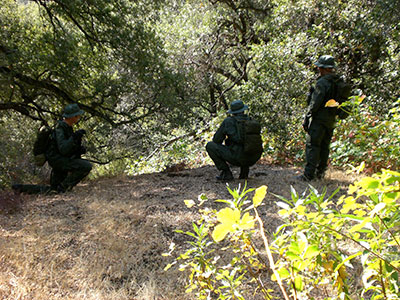
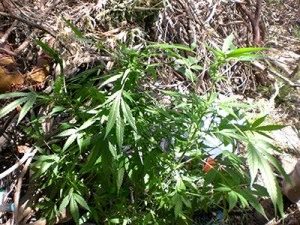
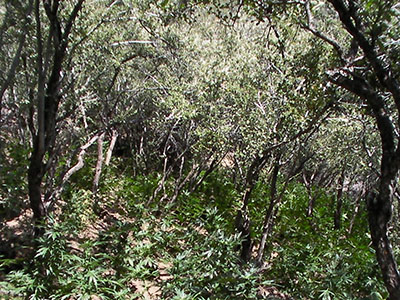

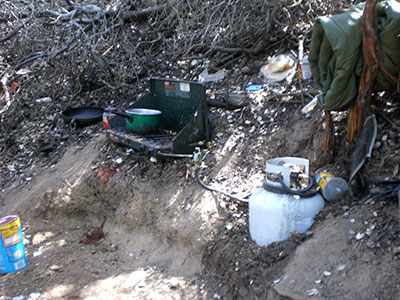
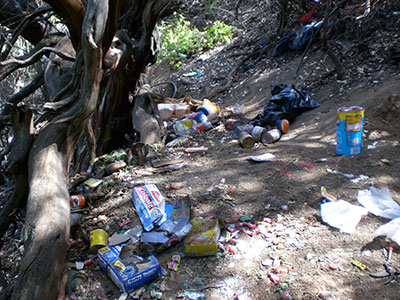
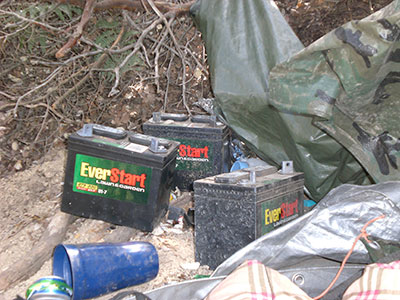
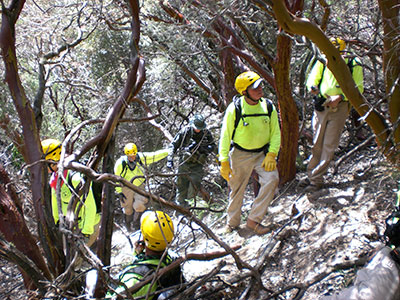


Good job Greg
Thanks, Tom!
Fascinating and disturbing. Will you be addressing the supply stream for medical marijuana? I’d assumed that they were more likely to be supplied via the quasi-legal (and presumably cleaner growers in Humboldt and environs) but it would be great to know for sure.
It could be a nice and handy little bit of details. Now i’m joyful that you shared this useful info around. Be sure to keep us current similar to this. Thank you for revealing.
Sad and frightening that so much of America’s marijuana has been coming from Mexico. With so many states legalizing medical cannabis and many more moving toward recreational legalization, I hope that it will begin being grown locally and we will see farmers in the U.S. profit off cannabis. If it’s going to be legal, we might as well benefit the U.S. economy in as many ways as we can.
Hi theweeklings.com Administrator!
https://conductiveruthless.com/gr1aq0pykc?key=887327cc7e0c2a786d9f277a3f87fe39
Regards
Eden
Hi theweeklings.com Administrator!
https://conductiveruthless.com/xrv4kp3fv4?key=1ce9fe3e8e8d4c8ea0ab9e119761163a
Regards
Devon
Dear theweeklings.com Owner!
https://weightfeathersoffhand.com/ivt13tueyr?key=c45f1c84f1b6b84a1f5e1f19c6996316
Thank You
Tarah
Hi There theweeklings.com administrator!
https://amazingoffersin2023.blogdon.net/amazing-offers-for-you-in-2023-33361040
Thank You!
Senaida